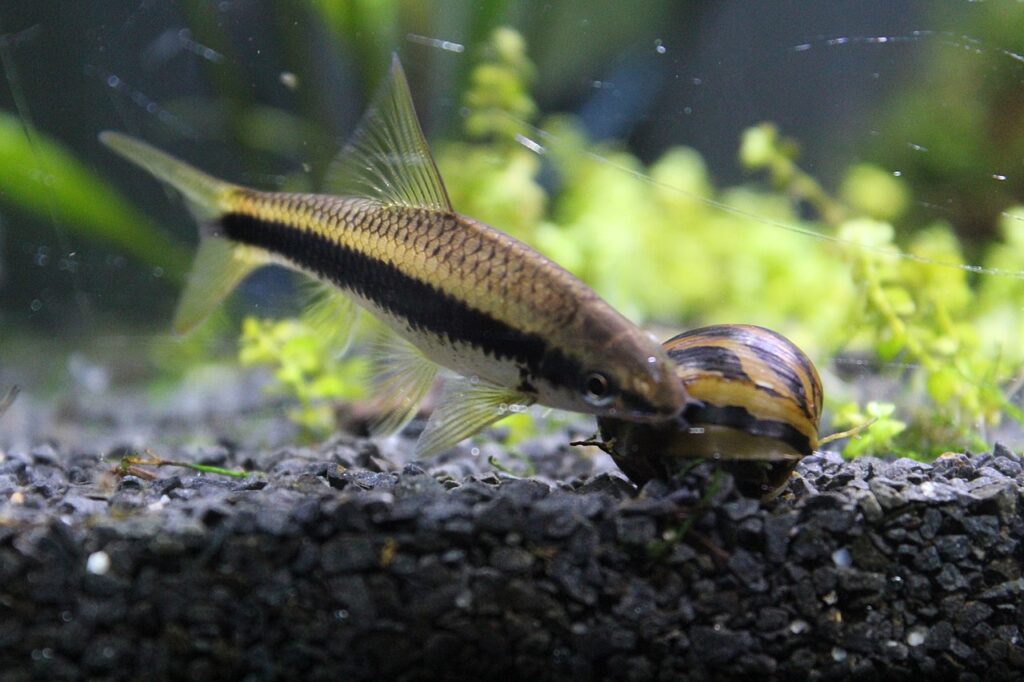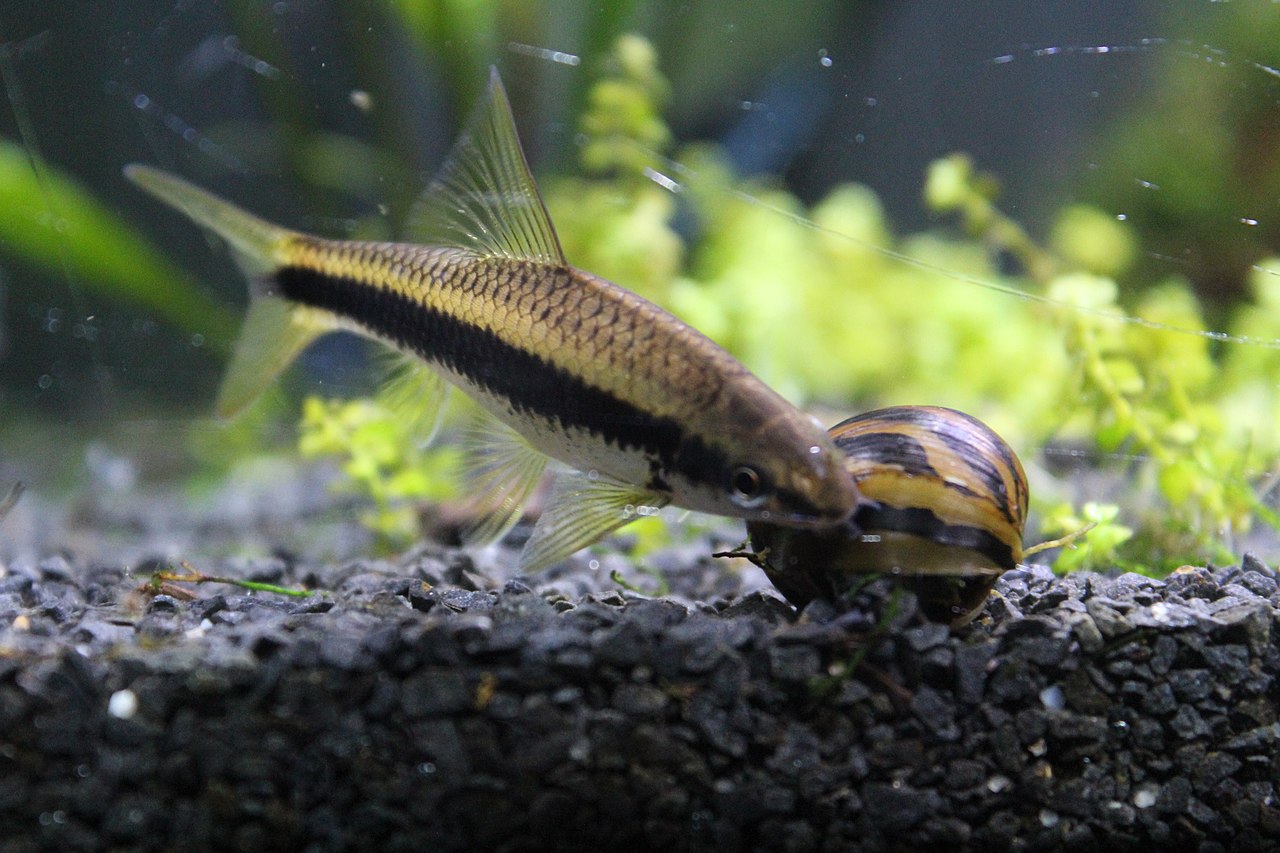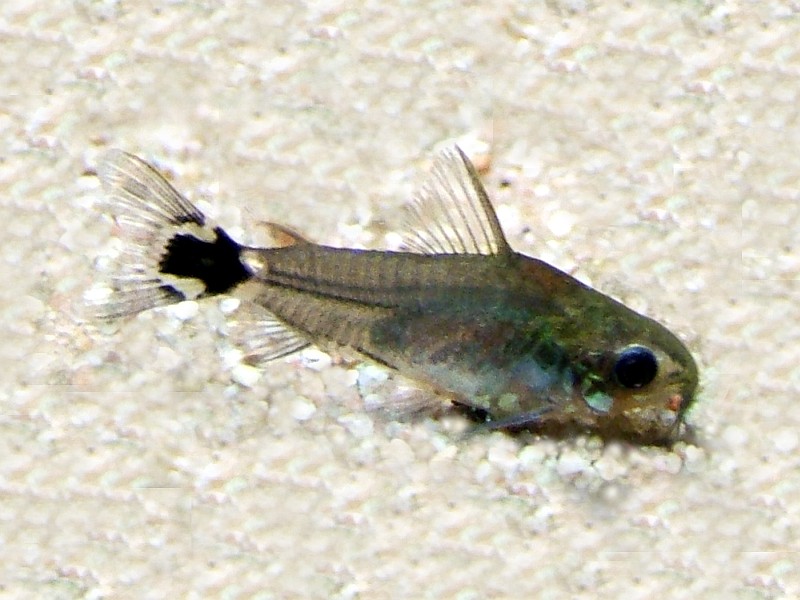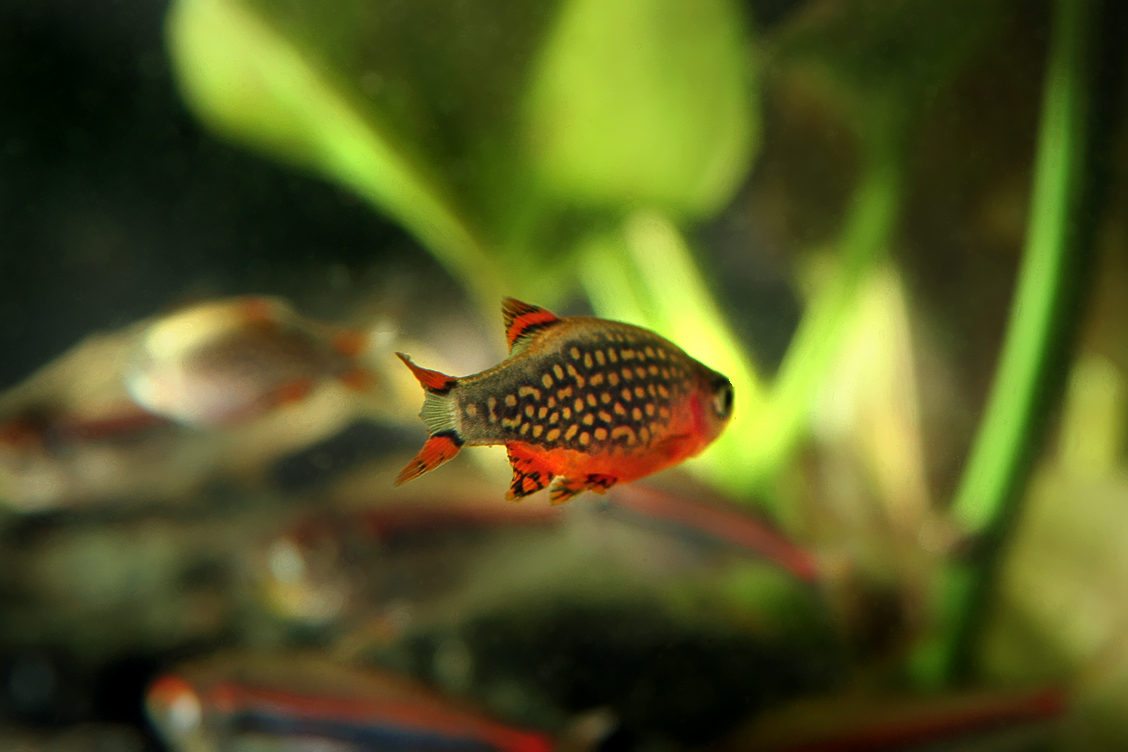The Siamese Algae Eater, also scientifically recognized as Crossocheilus oblongus, hails from the Cyprinidae family, making it a close relative to popular carps, barbs, and danios. Sporting a distinctive light brown or greyish hue, this fish stands out with a bold black stripe from head to tail. Interestingly, this stripe can vary in prominence among different individuals.
Table of Contents
Now, if you’re thinking of a rare gem to add to your collection, the Siamese Algae Eater isn’t it. These aquatic creatures are common in the fishkeeping world, primarily due to their commendable appetite for algae. Although the Siamese Algae Eater does not exhibit any significant color variations, there is another species that closely resembles it, often causing confusion—the False Siamese Algae Eater.
Originating from the serene streams of Southeast Asia, specifically Thailand, these fish are versatile swimmers. While they mainly hover near the tank’s bottom, don’t be astounded if you come across them in the middle or even near the surface of the water, especially when they’re on a quest to hunt algae.Their diet is predominantly algae, but they’re not finicky eaters. Offer them standard aquarium fare like pellets or flakes, and they’ll gladly accept. Behaviorally, Siamese Algae Eaters are a delight to watch. While mostly peaceful, a touch of territorial nature surfaces when they’re among their kin in smaller spaces.
When we delve into the statistics, we discover that a fully grown Siamese Algae Eater can reach an impressive length of 6 inches. With proper care, this captivating creature has the potential to adorn your aquarium for an extraordinary lifespan of up to ten years. Speaking of care, a 20-gallon tank is the minimum recommendation, but if you’re aiming for a group, think bigger.
One fascinating fact about these little swimmers is their appetite for “black beard algae.” They stand out in the fish realm for this unique taste preference. As they age, unlike some fishy counterparts, their craving for algae remains unwavering.
For a sprinkle of fun, it’s intriguing to note that the Siamese Algae Eater lacks barbels, those whisker-like appendages many of their Cyprinid cousins have. Although these creatures have been inhabiting Southeast Asian waters for a long time, their inclusion in the aquarium hobby has revolutionized the experience for enthusiasts who struggle with algae problems, particularly in planted tanks.

Key Information
The Siamese Algae Eater, with its distinctive markings and incredible algae-eating ability, has cemented its position in the hearts of aquarium enthusiasts. Originating from the serene streams of Southeast Asia, this fish is not just a beautiful addition to tanks but also serves a practical purpose. Here’s a detailed table to guide hobbyists about everything they need to know regarding the Siamese Algae Eater:
| Family | Cyprinidae |
| Price | Generally $3-$10, but may vary based on size and region. |
| Common Names | SAE, Algae Eating Cyprinid |
| Variants | No recognized color variants; often confused with related species like the False Siamese Algae Eater. |
| Ideal Tank Size | Minimum 20-gallons; larger for groups. |
| Water Parameters | pH: 6.5 – 7.5, Temperature: 75°F – 79°F |
| Lifespan | Up to 10 years with proper care. |
| Full Size | Approximately 6 inches. |
| Natural Environment | Streams and freshwater habitats in Southeast Asia. |
| Behavior | Generally peaceful; slightly territorial among its own kind in smaller tanks. |
| Habitat Preference | Bottom-dwelling, but roams all levels. |
| Aquarium Decoration | Varied, with a focus on plants to mimic its natural environment. |
| Ideal Tank Mates | Tetras, Rasboras, Danios, and most non-aggressive species. |
| Fish to Avoid | Larger, aggressive fish like Cichlids. |
| Best Foods/Diet | Algae, aquarium pellets, flakes, live foods. |
| Disease | Susceptible to common fish diseases; regular water checks are crucial. |
| Sex-Switch | Not known to change genders. |
| Gender Differences | Minimal visual differences; males might be slightly slimmer. |
| Care Level | Moderate; requires specific water conditions and regular monitoring. |
| Breeding Level | Difficult; breeding in home aquariums is rare. |
With the right conditions, the Siamese Algae Eater can be a delightful addition to your aquatic family. This guide serves as a foundation, but remember, continuous learning and observation are key to ensuring a happy life for your fish.
Ideal Tank Mates
In the vibrant world of fishkeeping, the Siamese Algae Eater stands out as a friendly and adaptable species. For hobbyists looking to set up a harmonious community tank, picking the right tank mates for the Siamese Algae Eater is essential. While they generally get along with a vast majority of fish, it’s beneficial to choose species that share similar temperaments, water parameter needs, and habitats. This will not only ensure the well-being of the Siamese Algae Eater but also promote a tranquil and balanced aquatic environment. Below is a curated list of ten ideal tank mates for the Siamese Algae Eater:
- Tetras (Neon, Cardinal, and others): These small, colorful fish are peaceful and thrive in similar water conditions as the Siamese Algae Eater. Their vibrant hues can add a splash of color to the tank, creating a beautiful contrast.
- Rasboras: Another group of peaceful, schooling fish that prefer similar water conditions. Rasboras are small, agile, and come in a variety of types with splendid colors and patterns.
- Danios: Active and hardy, Danios are great for community tanks. They are top-dwellers, ensuring that they don’t invade the Siamese Algae Eater’s primary territory at the bottom.
- Gouramis: While slightly larger, Gouramis are generally peaceful and bring a different dimension to the tank. Their labyrinth breathing allows them to take in atmospheric air, a unique feature in the fish world.
- Corydoras Catfish: Bottom dwellers like the Siamese Algae Eater, Corydoras are peaceful scavengers that will help in cleaning up the substrate and are less likely to compete for food.
- Dwarf Loaches: These are also bottom dwellers but have a peaceful nature, making them a suitable companion for the Siamese Algae Eater.
- Ghost Shrimp: These transparent crustaceans are not only intriguing but are also excellent at cleaning up uneaten food and detritus. They coexist peacefully with Siamese Algae Eaters.
- Cherry Barbs: With their radiant red coloration, Cherry Barbs are not just a visual treat but also possess a calm demeanor that aligns well with Siamese Algae Eaters.
- Mollies: Adaptable and peaceful, Mollies can live harmoniously with Siamese Algae Eaters. Their varied colors and patterns make them an attractive choice.
- Hatchetfish: Occupying the top section of the aquarium, Hatchetfish are unique looking and peaceful. They are unlikely to cross paths with bottom-dwelling Siamese Algae Eaters.
When planning a community tank, it’s essential to consider not just the compatibility of the species but also the tank’s size and individual territorial needs. Regular monitoring and ensuring a spacious environment can lead to a thriving, diverse aquatic community.
FAQs
How do Siamese Algae Eaters differ from Chinese Algae Eaters?
Siamese Algae Eaters (SAEs) and Chinese Algae Eaters (CAEs) are entirely different species. While both are known for their algae-eating habits, CAEs can become aggressive as they mature, whereas SAEs remain peaceful. Also, SAEs possess a distinctive black stripe that runs through their body, which CAEs lack.
Can Siamese Algae Eaters live in outdoor ponds?
Yes, Siamese Algae Eaters can live in outdoor ponds, especially in temperate climates. They’ll help control algae growth. However, ensure that the water conditions are stable, and predators like birds are kept at bay.
What’s the best way to introduce Siamese Algae Eaters to a new tank?
Acclimatize them slowly. Start by floating the bag they came in on the tank surface for about 15 minutes to equalize the temperature. Then, gradually introduce tank water into the bag over another 15-20 minutes before releasing them into the tank. This process reduces the shock of transitioning to new water parameters.
Will Siamese Algae Eaters consume aquarium plants?
No, Siamese Algae Eaters are primarily interested in algae and will typically leave healthy plants alone. They might, however, nibble on decaying plant matter, which can be beneficial for the tank’s cleanliness.
How can I differentiate between a juvenile and an adult Siamese Algae Eater?
The primary way is size. Juvenile Siamese Algae Eaters are significantly smaller than their adult counterparts. However, as they grow, their distinctive black stripe becomes more pronounced, making mature individuals easier to identify.
Do Siamese Algae Eaters require a specific lighting setup?
No, Siamese Algae Eaters aren’t particularly sensitive to light. However, having a day and night cycle is beneficial for their well-being. Also, a planted tank with natural or artificial plants can provide shaded areas, making the environment more comfortable for them.
Can they be kept singly or do they need a group?
Siamese Algae Eaters are quite adaptable. They can be kept singly or in groups. However, if you opt for a group, ensure the tank is spacious enough to minimize territorial disputes.
Do Siamese Algae Eaters have any natural predators?
In their natural habitat in Southeast Asia, Siamese Algae Eaters have predators like larger fish and birds. In a home aquarium setting, larger, aggressive fish might pose a threat. Therefore, it’s crucial to select tank mates wisely.
Can Siamese Algae Eaters be kept with shrimp?
Generally, Siamese Algae Eaters coexist peacefully with shrimp, especially larger varieties like Amano or Ghost Shrimp. However, there’s always a risk with smaller shrimp species, as they might become a snack. If you’re keen on adding shrimp, ensure there are plenty of hiding spots.
Is there a specific substrate that’s best for Siamese Algae Eaters?
While Siamese Algae Eaters aren’t overly picky about substrates, sand or fine gravel is preferable. These substrates mimic their natural environment and are gentle on their bodies as they scour the bottom for food.







